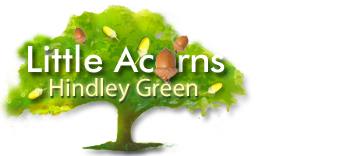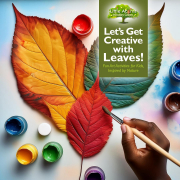Fun Art Activities for Kids, Inspired by Nature
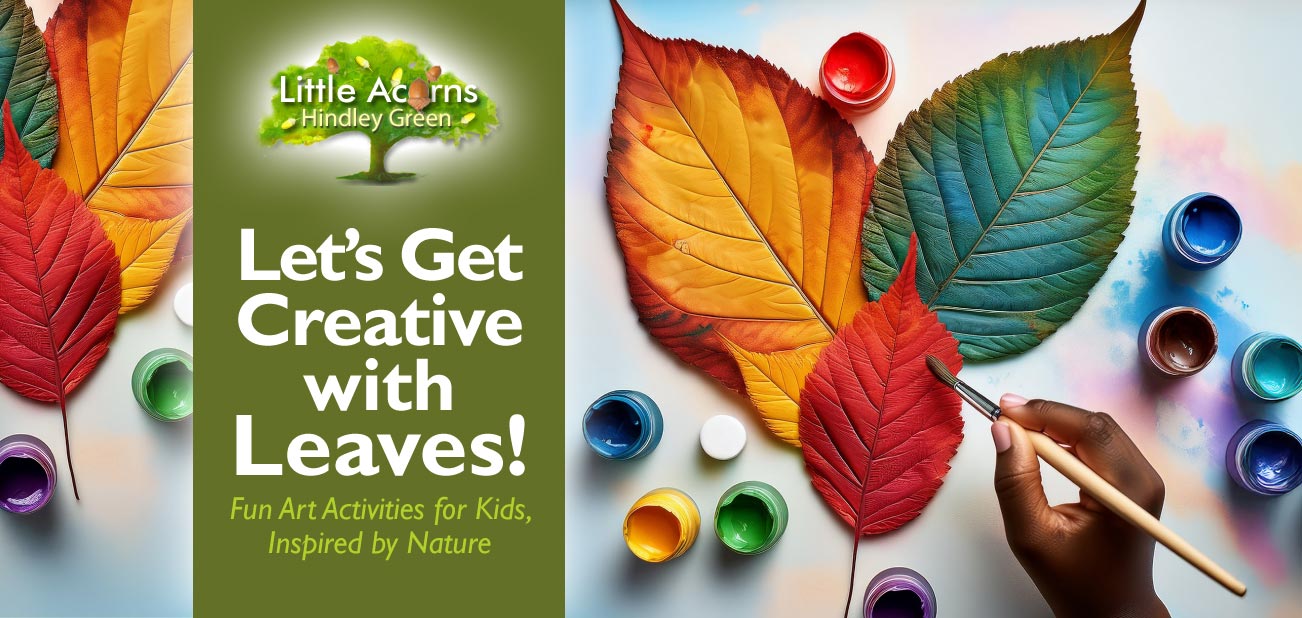
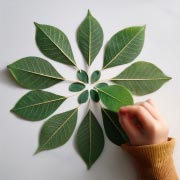 Following May’s Leaf Nature Hunt post, we now follow up with some fabulously creative activity ideas inspired by the leaves children have collected. It’s the perfect time for such activities as summer gradually makes way for autumn, and leaves naturally fall all around. Not only are today’s activity ideas fun and creative for little ones, but they also make a vital link in children’s minds between The Great Outdoors and art. Such a link has been present for centuries, so this is a great opportunity to introduce the theme to youngsters. With these simple leaf-inspired ideas, children will benefit from nature, inspire their creative minds, boost their imaginations, and even develop new creative and motor skills. So, let’s get creative today with leaves! Take a look at the activity ideas below.
Following May’s Leaf Nature Hunt post, we now follow up with some fabulously creative activity ideas inspired by the leaves children have collected. It’s the perfect time for such activities as summer gradually makes way for autumn, and leaves naturally fall all around. Not only are today’s activity ideas fun and creative for little ones, but they also make a vital link in children’s minds between The Great Outdoors and art. Such a link has been present for centuries, so this is a great opportunity to introduce the theme to youngsters. With these simple leaf-inspired ideas, children will benefit from nature, inspire their creative minds, boost their imaginations, and even develop new creative and motor skills. So, let’s get creative today with leaves! Take a look at the activity ideas below.
Step 1 for Children: Collect Some Leaves!
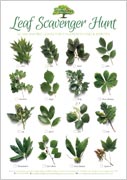 Children will need some leaves for these ‘leaf art’ activities. We suggest they collect a wide selection of shapes, sizes, and varieties, so they have the flexibility to undertake any of the leaf art activities below. Our free leaf reference poster should help. Adult supervision* is, of course, required for young children foraging for leaves outdoors; there are many hazards out there.
Children will need some leaves for these ‘leaf art’ activities. We suggest they collect a wide selection of shapes, sizes, and varieties, so they have the flexibility to undertake any of the leaf art activities below. Our free leaf reference poster should help. Adult supervision* is, of course, required for young children foraging for leaves outdoors; there are many hazards out there.
Step 2: Gather Art Materials
Children will need the relevant art materials for their leaf art. These may include non-toxic paint, pencils, or crayons, as well as paper and potentially child-safe glue, depending on the activities undertaken.
Step 3: Make Some Leaf Art!
Once children have gathered everything they need, it’s time to get creative! Here are a few ‘leaf art’ ideas to get them started.
Make a Leaf Collage
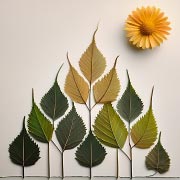 Whether fresh, dried, or pressed (see below), leaf collages can be used to make wonderful pictures and designs. With a little imagination, leaves can suddenly resemble little trees and landscapes, or be combined into formations that depict a flower head or a graphical design. The accompanying images show a couple of examples to get children’s creative juices flowing.
Whether fresh, dried, or pressed (see below), leaf collages can be used to make wonderful pictures and designs. With a little imagination, leaves can suddenly resemble little trees and landscapes, or be combined into formations that depict a flower head or a graphical design. The accompanying images show a couple of examples to get children’s creative juices flowing.
TIP: For more permanence, use dried or pressed flowers glued to paper or card. For greater creativity, add extra elements like dried/pressed flowers, or other elements like twigs and dried grass stems. Children should feel free to draw their own additions too, for example, the ground level, hill shapes, the horizon, drawn animals, or children playing ball under leaf ‘trees’.
Paint & Decorate Leaves
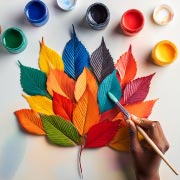 One of the most straightforward creative activities with leaves is simply to paint and decorate them with coloured paints. Doing so can create highly attractive groups of leaves that are fun and cheerful to look at. Experiment with flat colours or more intricate decorations such as polka dots, stripes, stars, or zigzags. Glue the finished leaves to paper or card once dry to use them as part of a leaf collage (see above).
One of the most straightforward creative activities with leaves is simply to paint and decorate them with coloured paints. Doing so can create highly attractive groups of leaves that are fun and cheerful to look at. Experiment with flat colours or more intricate decorations such as polka dots, stripes, stars, or zigzags. Glue the finished leaves to paper or card once dry to use them as part of a leaf collage (see above).
TIP: Dried or pressed leaves may help coloured paint adhere more easily to the leaves; however, they may become more fragile if dried, so handle with care!
Discover Leaf & Flower Pressing
 Leaves and small flowers can be dried, flattened, and kept longer by pressing them. Once pressed and dried, they’re like little works of art in themselves and are quite delightful. They can be kept as bookmarks or keepsakes, or used as art and collage components for some of the other leaf activities outlined today.
Leaves and small flowers can be dried, flattened, and kept longer by pressing them. Once pressed and dried, they’re like little works of art in themselves and are quite delightful. They can be kept as bookmarks or keepsakes, or used as art and collage components for some of the other leaf activities outlined today.
HOW? Simply place leaves and small flowers individually between the pages of an ideally unprinted notebook or sketchbook, or in between sheets of unprinted newsprint, blotting, or cartridge paper. Place a heavy, flat weight on top — books usually suit perfectly — and leave for anywhere from a few days to a couple of weeks, depending on the thickness and moisture levels of the contained leaves/flowers.
Do a Leaf Rubbing
 Leaf rubbing is a simple yet effective art activity involving leaves. First, simply place a leaf under a sheet of fairly thin paper. Holding the paper still with one hand, children should use their writing hand to rub a crayon, pastel, charcoal stick, or soft pencil lead over the area where the leaf sits, scribbling from left to right in closely aligned lines. A ‘picture’ of the underlying leaf will gradually appear!
Leaf rubbing is a simple yet effective art activity involving leaves. First, simply place a leaf under a sheet of fairly thin paper. Holding the paper still with one hand, children should use their writing hand to rub a crayon, pastel, charcoal stick, or soft pencil lead over the area where the leaf sits, scribbling from left to right in closely aligned lines. A ‘picture’ of the underlying leaf will gradually appear!
TIP: Use leaves with a defined texture and structure for the best effect. Use different colours for added interest.
Print with Leaves
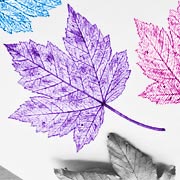 Leaf printing is super-easy and fun for little ones. Find a suitable leaf and, using a broad brush or — better still — paint roller, paint the most textured side of a leaf with a thin layer of paint, ensuring it covers the whole side of the leaf. Then, while the paint is still wet, place the painted side carefully over a sheet of blank paper. Without moving its position, press all parts of the leaf down so the paint makes contact with the underlying paper. Another way to accomplish this is to use a clean roller to ‘roll’ over the leaf so it connects the paint with the paper. Carefully remove the leaf and — hey presto — you should have an image of the leaf structure and texture right there on the paper. Try different leaves, various colours, and overlapping experiments to accomplish different outcomes.
Leaf printing is super-easy and fun for little ones. Find a suitable leaf and, using a broad brush or — better still — paint roller, paint the most textured side of a leaf with a thin layer of paint, ensuring it covers the whole side of the leaf. Then, while the paint is still wet, place the painted side carefully over a sheet of blank paper. Without moving its position, press all parts of the leaf down so the paint makes contact with the underlying paper. Another way to accomplish this is to use a clean roller to ‘roll’ over the leaf so it connects the paint with the paper. Carefully remove the leaf and — hey presto — you should have an image of the leaf structure and texture right there on the paper. Try different leaves, various colours, and overlapping experiments to accomplish different outcomes.
TIP: Textured leaves with defined structures and veins work best. Often, the underside of a leaf is more defined. Leaf printing can be used to make pictures too, like in some of the other activities featured today.
Make Art Inspired by Leaves
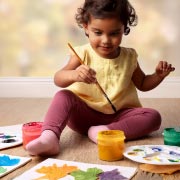 Instead of painting or using leaves directly, children can also try to depict them with their own paintings and drawings. These are a good way to encourage children to focus on getting the shape and details correct, fine-tune hand-eye coordination, and bolster technical mark-making skills. And, because children are free to paint or draw however they like, they can let their imaginations run riot and perhaps invent their own leaf shapes, leaf patterns, and natural worlds on paper.
Instead of painting or using leaves directly, children can also try to depict them with their own paintings and drawings. These are a good way to encourage children to focus on getting the shape and details correct, fine-tune hand-eye coordination, and bolster technical mark-making skills. And, because children are free to paint or draw however they like, they can let their imaginations run riot and perhaps invent their own leaf shapes, leaf patterns, and natural worlds on paper.
TIP: If you, the parent, have some creative skills, try demonstrating with your own leaf drawing or painting first. Explaining what you’re focusing on and how you’re achieving things along the way may help children better understand how they might approach the activity themselves.
Create Greeting Cards Using Leaves
 Children can use some of the creative skills they’ve learnt in the activities above to make greeting cards that feature their leaf art. For example, they can forage for heart-shaped leaves and paint them cerise pink to use as part of a simple Valentine’s Day or Mother’s Day greeting card. More general greeting cards for other special occasions can also be accomplished using leaves and dried flowers — for example, arranged to depict a leaf or dried ‘bouquet’ on a card sent for a birthday.
Children can use some of the creative skills they’ve learnt in the activities above to make greeting cards that feature their leaf art. For example, they can forage for heart-shaped leaves and paint them cerise pink to use as part of a simple Valentine’s Day or Mother’s Day greeting card. More general greeting cards for other special occasions can also be accomplished using leaves and dried flowers — for example, arranged to depict a leaf or dried ‘bouquet’ on a card sent for a birthday.
TIP: Try doing an image search on your preferred search engine to find other examples of leaf and flower art to inspire your child’s own creations.
Leaf Art Provides Many Benefits to Children
Leaf art activities like these may seem simple, but they provide many potential benefits to children, including under-fives. Getting out in nature to forage for leaves is, in itself, beneficial in a huge number of ways, including through exercise, greater well-being, fresh air and freedom, and even a boost to academic grades, to name but a few. See our article The Importance of Nature in Early Childhood for more details.
The leaf art itself also benefits children in a wide variety of ways, and supports many of the aims of the EYFS curriculum. From practising hand-eye coordination, honing fine motor skills, and stimulating imaginations, to opportunities for self-expression, creativity, expanded language, and interpersonal communication, these simple activities offer huge benefits to little ones — naturally. Spring, summer, and autumn are the perfect times for such activities, so why not get your child inspired with some leaf art soon? Enjoy!
Little Acorns Nursery, Hindley Green
A Year-Round Childcare Service for Children Under Five
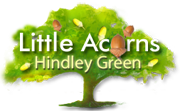 Little Acorns Nursery in Hindley Green provides a high-quality weekday childcare service virtually all year round. With its home-from-home environment, excellent facilities, and extensive outdoor grounds, children have fun while their learning and development are carefully nurtured by high-quality early years practitioners. At Little Acorns, every child receives the support and care they need to be as school-ready as possible by the time they leave us to begin formal education. Little Acorns Nursery supports funded hours for eligible children from the age of just 9 months.
Little Acorns Nursery in Hindley Green provides a high-quality weekday childcare service virtually all year round. With its home-from-home environment, excellent facilities, and extensive outdoor grounds, children have fun while their learning and development are carefully nurtured by high-quality early years practitioners. At Little Acorns, every child receives the support and care they need to be as school-ready as possible by the time they leave us to begin formal education. Little Acorns Nursery supports funded hours for eligible children from the age of just 9 months.
To register your interest, apply for a nursery place, arrange a visit, or simply ask any questions, please get in touch today:
Our nursery in Hindley Green serves people from the Wigan, Bolton, and Greater Manchester areas, including Bickershaw, Leigh, Atherton, Westhoughton, Ince-in-Makerfield, Platt Bridge, and Tyldesley.
*Safety Notice
Children, especially the young, should be accompanied by an adult at all times when exploring and playing outdoors. Supervising adults should teach children about potential dangers, including poisonous berries, fungi, animal waste, choking hazards, water hazards like ponds, water courses, and lakes, traffic dangers, stranger danger, and so on. These are just a few examples, and adults will need to do their own risk assessments and educate children about such risks. Children should also be reminded to wash their hands with soap and water after the activities.
